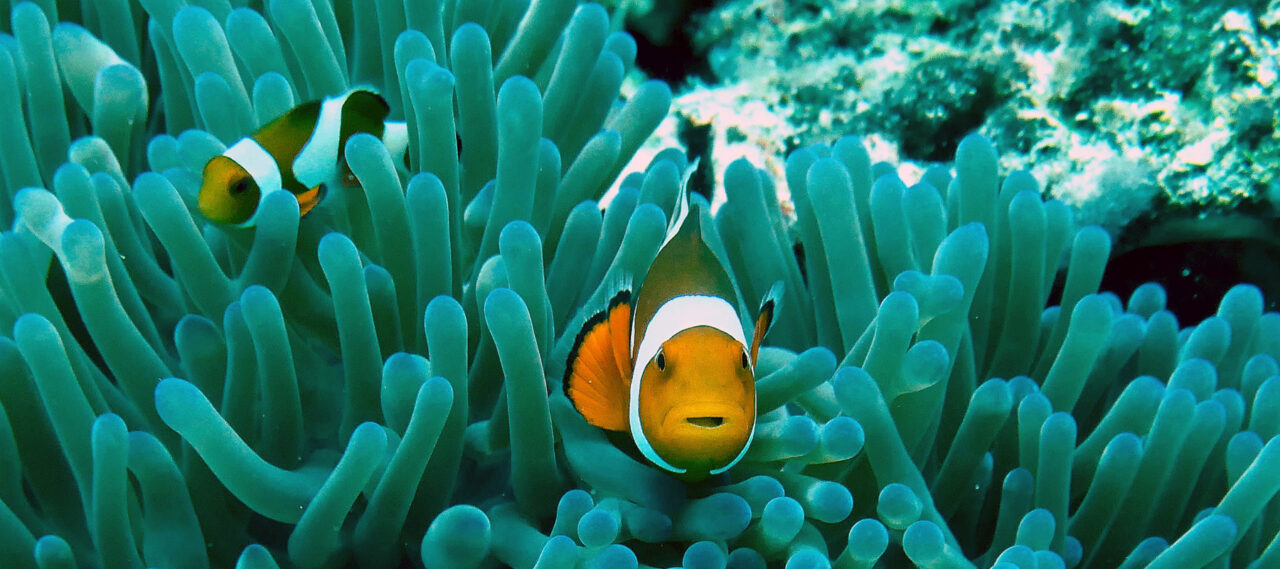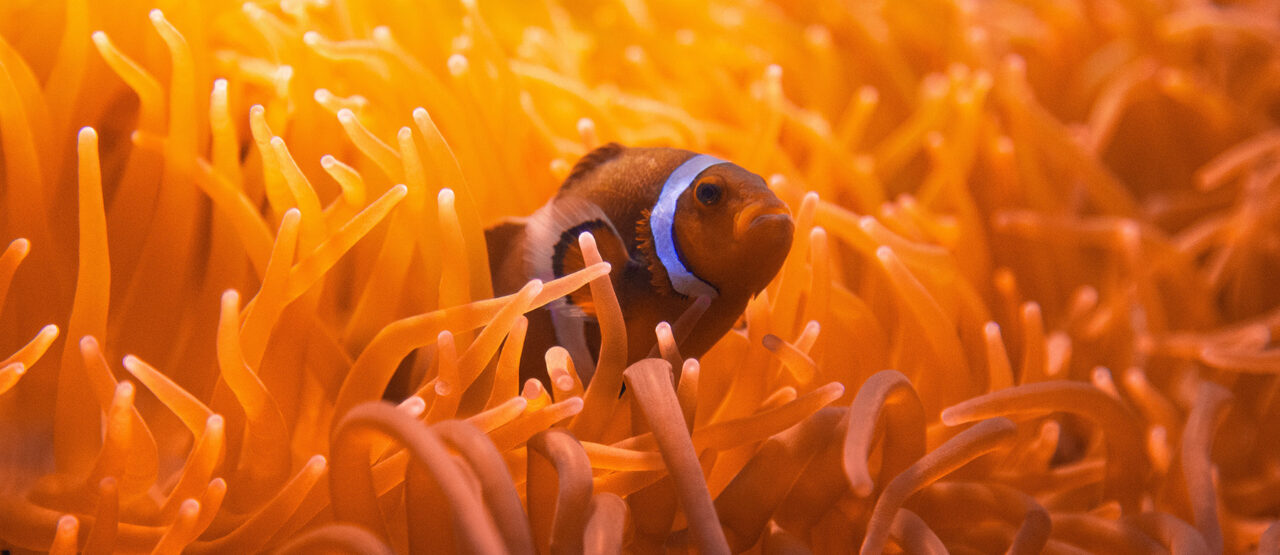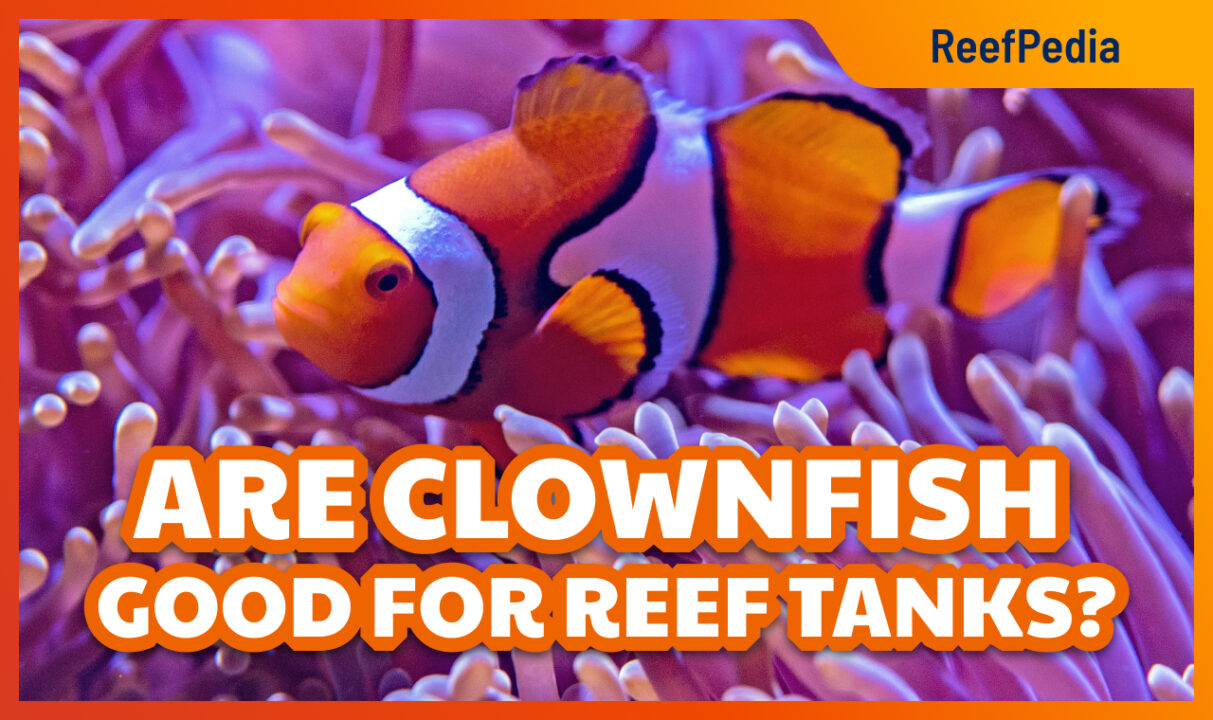It’s hard to picture a reef tank without clown fish. Their bright colors and unique behavior make them one of the most recognizable and loved saltwater fish of saltwater aquarium. Read the article and get to know all the information you need about this fish tank.
Table of Contents
What is the most popular clown fish species?
The most popular species of clownfish is the Amphiprion ocellaris, also known as the ocellaris clownfish. In addition to this, in home aquarium, you can also find species like Amphiprion percula and Amphiprion clarkii or maroon clownfish.
Are clown fish difficult to keep?
Clownfish are hardy fish and they do not demand special treatment when it comes to care. When it comes to water tank temperature, they prefer temperatures between 24-28°C and a pH level of 8.1-8.4.
They prefer water tanks decorated with live rock. Clown fishes need large tanks; 90 gallons tank size is accurate.
Characteristics of clown fish ocellaris
The ocellaris clowns fishes (Amphiprion ocellaris), also known as the false percula clownfish or common clownfish, clarkii clownfish, is a small fish with a bright orange color and white stripes. There are many clownfish species available in local fish stores.
They inhabit tropical reefs in several places around the world, including the Great Barrier Reef.
Males are typically smaller than females, measuring between 6 to 8 cm, while females can reach up to 11 cm in length.
Is Nemo a percula or ocellaris? Nemo clown fish belongs to percula species.
What do clown fish eat?
Regarding feeding, clownfish are omnivores. They can be fed both ready-made flake or pellet food, as well as frozen foods. It’s important to feed them moderately to avoid overfeeding, which can lead to digestive problems.

Are clown fish aggressive?
Despite their charming appearance, clown fish is not a peaceful community fish and can exhibit some aggressive behaviors, especially towards other clownfish of the same species. This aggression is often related to hierarchy and territory in the saltwater aquarium. They are semi aggressive species.
If two clownfish of the same species meet in the same tank, they might compete for dominance, leading to aggressive skirmishes. However, if introduced as a pair, their aggression towards each other is considerably reduced. Towards other fish species, clownfish are usually peaceful, but they can become defensive of their territory, especially near their host anemone. Hence, ensuring the right conditions and setup in the aquarium can help minimize potential conflicts.
Symbiosis between clown fish and anemone
One of the most interesting features of clownfish is their ability to form symbiotic relationships with anemones. Anemones have stinging cells that can be harmful to other fish, but clownfish have a special mucus on their skin that protects them from the stings. In return for shelter among the anemone’s tentacles, clownfish protect the bubble tip anemone from predators and bring them food remnants.
Clownfish can also live amongst corals, especially preferring species like Euphyllia glabrescens, Goniopora, and long-polyp Sarcophyton corals.
This unique interaction is a perfect example of how different species can collaborate for mutual benefits.
Clown fish breeding
Breeding clown fish in a marine aquarium is an intriguing process and can be an exciting experience for aquarium hobbyists. Captive bred fish are healthier and hardier than other species.
Pair formation: Clownfish are sequential protandrous hermaphrodites, meaning they are born as males and then can change sex to female under specific conditions. In an aquarium, when two of the same species approach each other, one turns into the dominant female while the other remains male.
Egg laying and incubation: The female lays her eggs on a flat surface like a rock, shell, or even the side of the tank. The male then swims over them to fertilize them. After the eggs are fertilized, the male becomes their primary guardian, fanning water over them to ensure proper water flow and oxygen supply. The incubation usually lasts from 6 to 10 days, depending on conditions and species.
Hatching: After the incubation period, larvae hatch from the eggs. These larvae are very tiny and transparent. In their early life stage, they float in the water, feeding on tiny planktonic organisms.
Metamorphosis into young fish: After several days or weeks, depending on the species and conditions, the larvae begin their metamorphosis into young fish. At this point, they look more like adult clownfish and start seeking shelter, often among anemones.

Summary
Given their visual appeal, easy care, and fascinating symbiosis with anemones, clownfish are an excellent addition to marine aquariums. Their presence not only adds color and life to the saltwater tank but also attracts and amazes anyone who chooses to keep them.
Go to ReefPedia.org and read more than 140 in-depth articles prepared by industry experts commenting on marine aquariums and reef aquaristics.
About the author

Marek Protasewicz
Reefkeeping has been my passion for over 10 years now. I love learning. The hobby has taught me many valuable lessons, patience being the best example. Combining work and passion is my path. I run Crazy Coral, a marine aquarium shop, for a number of years. Building this business from the scratch I learnt from my own mistakes at a heavy cost.
Later I managed a project aimed at development of methods for quick growth of Corals in non-natural conditions. The project was carried out by Get Sales, Poland. Presently, I am responsible for distribution strategy at Reef Factory, of which I am a co-founder. The company produces smart devices for marine aquaristics. The last projects I have been involved in are Social Reef and ReefPedia.



